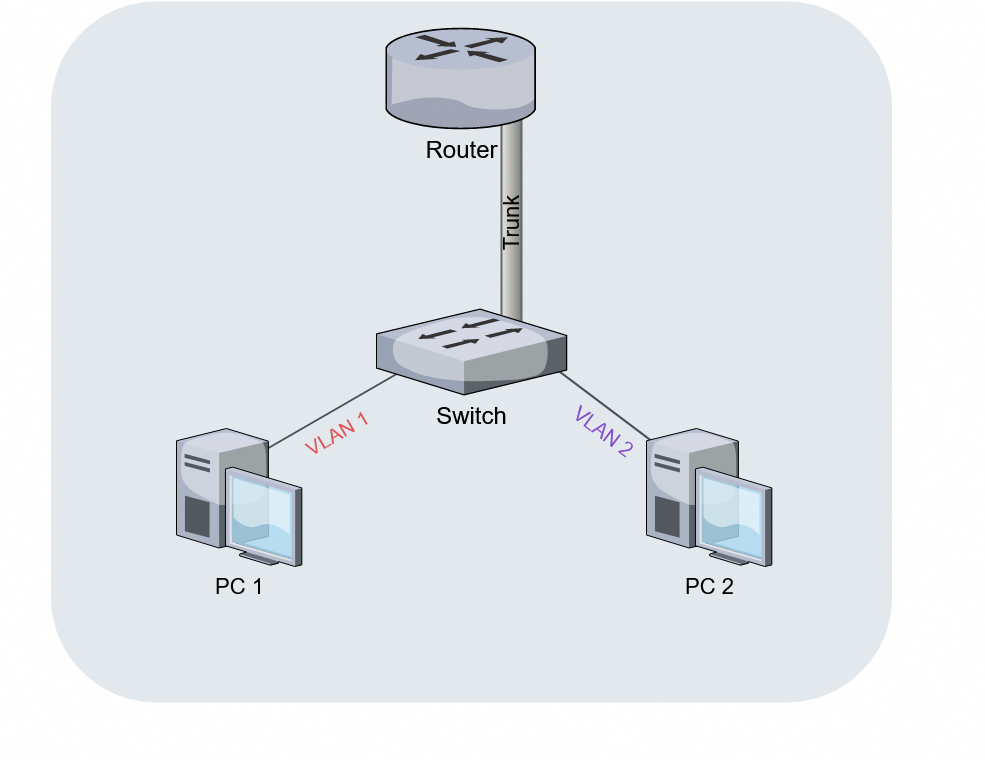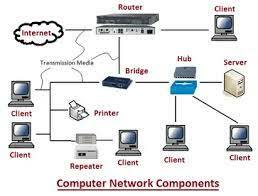Unraveling Computer Networks: A Comprehensive Guide to Their Key Components
Introduction
In the digital age, computer networks have become the backbone of information exchanges, both in personal and professional domains. Despite their ubiquitous presence, the functioning of these networks remains a mystery to many. This article serves as a comprehensive guide to demystify them, focusing primarily on their key components, how they interact, and real-world applications.
What is a Computer Network?
A computer network is an interconnected system formed by various computing devices. This system enables the sharing and exchange of information between those devices. The fundamental characteristics of a computer network include:
- The Capacity for Information Exchange: It allows for the interchanging of data, irrespective of the type: text, image, video or other formats.
- Connectivity Range: The range can be quite varied. Smaller networks operate within confined spaces like homes or offices, while larger networks extend across cities, countries or even globally.
- Component Involvement: Computer networks are run by several integral components such as routers, switches, hubs and network interface cards (NICs). These components work together to enable efficient and effective communication.
Considering the above points, it becomes clear that a computer network is much more than a simple connection between two computers. It's a complex system that facilitates seamless communication and collaboration across devices.
Why is Understanding Computer Network Components Important?
Digesting the functioning of computer network components carries substantial importance. Its significance is amplified due to numerous aspects, each contributing to a more efficient and effective network management.
1. Problem Diagnosis and Solutions: Every network, irrespective of its size or complexity, can face downtimes due to various issues. Acknowledging the role of each component makes it easier to pin down the cause of a problem and address it swiftly and accurately.
2. Optimizing New Network Configurations: Setting up a new network or upgrading an existing one is not a simple task. The fundamental understanding of the network components will allow one to make astute choices, designing a network configuration that aligns best with their specific needs.

3. Enhancing Network Performance: The knowledge of how different network components interact can help optimize network performance. For example, using switches instead of hubs can drastically reduce network congestion and improve overall efficiency.
4. Security Management: The components of a computer network play a crucial role in the network's security. For instance, routers often come with built-in firewall features that protect the network from potential threats. Understanding these components can hence lead to strengthened network security.

In conclusion, a strong comprehension of computer network components is not merely a technical requirement but a critical aspect of managing and improving network performance, efficiency, and security.
What are the Key Components of a Computer Network?
Digging deep into the architecture of a computer network, we come across several critical components — each having their unique significance. These key components include Network Interface Cards (NIC), switches, hubs, bridges, and routers:
Understanding the Functionality of Network Interface Card (NIC)
Undoubtedly, a pivotal component of a computer network, the Network Interface Card (NIC), acts as a conduit between a computer and a network cable. Its primary role is to facilitate communication between the computer and other networked devices. Moreover, it also functions as the device's unique identifier in the network, courtesy of its distinctive MAC address.
• Facilitates computer-to-network communication
• Offers device a unique MAC address for identification within the network
Exploring the Roles of Switches, Hubs, & Bridges in Computer Network Connectivity
The functioning of switches, hubs, and bridges plays a crucial role in the smooth transfer of data within the network.
Hubs are responsible for broadcasting data packets to all devices within a network — no differentiation made between the intended and other recipients. On the other hand, switches ensure improved network efficiency by delivering data packets only to the destined device.
• Hubs: Broadcast data to all network devices
• Switches: Deliver data only to the intended device
Bridges act as connectivity mediums between different segments of a network. They serve as the network's traffic control mechanism, effectively reducing congestion.
• Bridges: Connect different network segments, reduce network congestion
Demystifying the Role of Routers in a Computer Network
Routers form the cornerstone of any computer network, connecting various networks and facilitating the exchange of data between them. They function by directing data packets along the most efficient paths, hence ensuring reliable network communication. An added advantage is their ability to enhance network security by providing functionality for firewalls and VPN connections.
• Connects various networks
• Facilitates efficient data exchange
• Provides features like firewall and VPN for enhanced security
In conclusion, understanding these components helps in pinpointing network issues, planning network upgrades or setups intelligently, and ultimately, enhances overall network performance and security.
How Do These Computer Network Components Interact and Work Together?
In a computer network, various components communicate effectively to ensure seamless data exchange. Here's a closer look at their interaction:
- Network Interface Card (NIC): Often underestimated, the NIC forms the linchpin of a computer network. It provides the physical connection between the network and the computer. Every NIC features a distinct MAC address, akin to a unique ID, paving the way for networked device communication.
- Switches, Hubs, and Bridges: These components act as traffic managers in a network. Hubs indiscriminately broadcast data packets to all devices. Conversely, switches enhance efficiency by delivering packets only to the intended recipient. Bridges connect different network segments, managing traffic, and reducing congestion.
- Routers: Routers are the heart of a network, connecting multiple networks and facilitating data exchange. By directing data packets along the most efficient routes, routers ensure robust and effective intercommunication.
Appreciating these interactions is key to understanding the delicate balancing act of network functionality and optimization. Knowledge of how components interact is invaluable for troubleshooting, enhancing network performance, and increasing security.
Real-world Examples: How Do These Components Facilitate Everyday Connectivity?
The contributions of these network components extend beyond computer or data centers, subtly influencing our day-to-day connectivity. Here's a glimpse into how they weave into our everyday life:
1. Hubs: Hubs function as the 'broadcast center' in a network. Visualize a busy train station where announcements are made over the loudspeaker - similarly, hubs broadcast data to all devices in a network, regardless of whether the information applies to them.
2. Switches: Quite the contrary to hubs, switches are more targeted in their operation. Imagine delivering a parcel to a specific address; switches direct data to relevant recipients only. This targeted approach leads to better network efficiency by reducing unnecessary traffic.
3. Bridges: Bridges in a network are like junctions on roads that connect different paths. They connect individual network segments and regulate traffic flow between them. Think of them as traffic signals on a busy road, helping to reduce network congestion and allowing for smoother data transfer.
4. Routers: Last but not least, routers function as the 'postmasters' of a computer network. Much like how a postmaster sorts and directs mail to various locations, routers direct data packets through different networks in the most efficient manner. They're also responsible for providing additional security features such as firewall and Virtual Private Network (VPN) support.
This understanding of how everyday network connectivity relies on these components demystifies the complex world of computer networks and underscores their importance in our digital lives.
Conclusion
Routers occupy a pivotal role in a computer network, connecting multiple networks and facilitating data exchange between them. They direct data packets along the most optimal paths, ensuring efficient and reliable network communication. They also provide additional features like firewall and VPN connections for enhanced network security.
Related FAQs about what are different components of a computer network
What is the difference between a switch, a hub, and a router in a computer network?
In a computer network, a hub broadcasts information to all connected devices indiscriminately. A switch, on the other hand, intelligently sends information only to its intended recipient, improving efficiency. A router connects multiple networks together and directs data along the most efficient path between them.
Why are Network Interface Cards (NICs) necessary for a computer network?
Network Interface Cards (NICs) are crucial for a computer network as they serve as a bridge between computers and the network. They facilitate communication between networked devices, and each NIC possesses a unique MAC address that identifies the device on the network.
How do these components of a computer network influence our daily digital experiences?
These components of a computer network are integral to our daily digital experiences. They enable efficient data transfer, smooth internet usage, and ensure security during online activities. From sending emails, streaming videos, to online shopping, we subtly interact with these components constantly.


